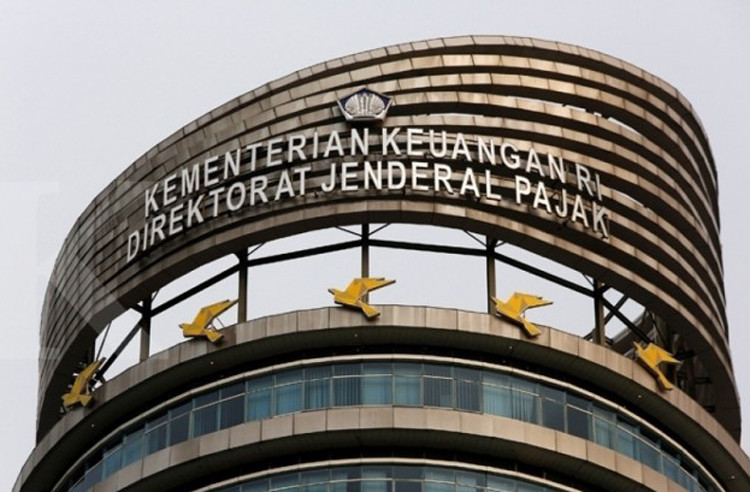Popular Reads
Top Results
Can't find what you're looking for?
View all search resultsPopular Reads
Top Results
Can't find what you're looking for?
View all search resultsTaxpayers can look to MAP facility for settling tax disputes
The internationally recognized mutual agreement procedure (MAP) offers several advantages to Indonesian taxpayers seeking dispute settlement.
Change text size
Gift Premium Articles
to Anyone
A
s the government stepped up its tax efforts with stronger enforcement, the number of tax disputes increased 52.37 percent to 152,494 cases in 2018. But the Directorate General of Taxation (DGT) rejected most of these cases.
This is plausible because the DGT faces a dilemma. Since the majority of dispute cases related to larger amounts of taxes that taxpayers were due to pay, accepting them would mean that the DGT would collect fewer tax receipts.
The number of appeals taxpayers filed against the DGT's rejection of their disputes with the Tax Court also increased to 9,657 in 2018 from 5,533 in 2017, according to the DGT 2018 report. But the court also decided in favor of the DGT in 64.60 percent of the 6,034 appeals heard in 2018, whereas the tax office lost about 50 percent of the 24,195 appeals the court heard in 2012-2017.
Notwithstanding that taxpayers won a fairly high number of appeals at the Tax Court, the appellate process is usually a lengthy one until a final binding decision is issued. The entire process may take 2.5 to 5 years from the objection to the appeal and to the final stage at the Supreme Court.
Alternatively, instead of going through the domestic tax dispute settlement mechanism through the DGT and the Tax Court, the taxpayer could also request the mutual agreement procedure (MAP) within three years of receiving the DGT's Tax Assessment Letter. The MAP is a dispute resolution mechanism for settling disputes between the parties of an internationally tax treaty.
Under the MAP, the tax dispute is to be settled by the competent authorities of the two states as stipulated in the bilateral tax treaty. At the DGT, it is the Directorate of International Taxation that handles dispute cases under the MAP facility. Ministry of Finance Regulation (PMK) No. 49/2019 stipulates that cases to be resolved under MAP shall conclude 24 months from the first round of consultations. This is much faster than the domestic resolution mechanism which goes from objection, to appeal, to Tax Court proceedings, and if necessary, to a judicial review at the Supreme Court.
In addition, the performance of countries worldwide in applying the MAP facility is reviewed regularly by the Organization for Economic Cooperation and Development (OECD). One of the review standards is that the MAP should conclude in an average timeframe of 24 months.
Accordingly, the Indonesian government will attempt to speed up the dispute resolution process to meet the 24-month average timeframe. Since the Tax Court Law does not prescribe a maximum duration for dispute resolution at the Tax Court, the domestic mechanism carries no certainty as regards the dispute settlement timeframe.
The taxpayer can file under the domestic mechanism and the MAP facility simultaneously, provided that the Tax Court has not issued a decision. Accordingly, the taxpayer may request the MAP facility while pursuing an objection or appeal. The MAP will be halted if the Tax Court has issued a decision in a dispute case for which the taxpayer has also requested the MAP.
Resolving tax disputes under the MAP could be beneficial for the taxpayer, as the procedure eliminates the possibility of double taxation. This is because the MAP is pursued between the competent authorities in Indonesia and in the country of residence of the foreign taxpayer named in a MAP case filed by an Indonesian taxpayer.
On the other hand, pursuing a dispute settlement at the Tax Court will not protect the taxpayer from double taxation. For instance, if the taxpayer loses their appeal at the Tax Court, they must pay their tax in accordance with the Tax Court's decision. Meanwhile, the Indonesian taxpayer's transaction partner residing in another country will still be taxed on the same income source. This second country will not grant credit for the tax paid in Indonesia under the Tax Court's decision.
Indonesia processed 35 MAP cases in 2017 (including cases dating from Jan. 1, 2016) and 49 MAP cases in 2018 (including the 2017 ending inventory), with 13 settled in 2017 and 14 cases in 2018.
The OECD reviewed Indonesia's MAP performance in 2018, and found that the average timeframe for concluding a dispute case was 24 months. Prior to 2016, the average conclusion timeframe was over 40 months, so it can be assumed that the government tried to accelerate the process. Moreover, the review found that Indonesia met all requirements of the OECD's minimum standards for base erosion and profit shifting (BEPS).
Resolving a tax dispute through the MAP facility offers advantages to the taxpayer in that the facility provides more certainty and a shorter process while eliminating the possibility of double taxation.
***
The writer is analyst at the Fiscal Policy Agency, Ministry pf Finance. The view expressed here is personal.










